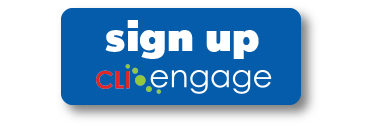CLI Engage offers two tools to support dyslexia screening for Kindergarten and 1st Grade students in English and Spanish. These tools can be used together to identify students who may be at risk for dyslexia.
- Dyslexia Screeners are direct assessments that align with the student skill criteria for dyslexia screening in accordance with Texas Education Code §28.006 and §38.003(a)
- Dyslexia Referral Checklists are supplemental questionnaires that build a link between direct assessment of early reading skills and classroom observations
Resources by Grade Level
Kindergarten (KPM)
The Circle Kindergarten Progress Monitoring (KPM) dyslexia screener found in Wave 3 (EOY) is comprised of KPM measures that directly align with the required measures outlined by TEA. Kindergarten students must be screened for dyslexia by the end of the school year. Please note, KPM was previously known as TX-KEA.
KPM English
| Skills (TEA Dyslexia Handbook) | KPM Measure |
|---|---|
| Letter Sound Knowledge or Letter Naming Fluency |
Letter Sounds (Receptive) Letter Sounds (Expressive) |
| Phonological Awareness | Blending (Receptive) Blending (Expressive) |
KPM Spanish
| Skills (TEA Dyslexia Handbook) | KPM Measure |
|---|---|
| Letter Sound Knowledge or Letter Naming Fluency | Sonidos de las letras (Receptivo) |
| Phonological Awareness | Combinación de sonidos (Receptivo) Combinación de sonidos (Expresivo) Decodificación |
*Based on data analysis, the Spanish decoding sub-measure, decodificación, is also a requirement for the KPM dyslexia screener to identify Spanish language students that may be at risk for reading difficulties.
Grade 1 (TPRI)
The TPRI 1st Grade English Dyslexia Screener can be found in Wave 2 and is comprised of TPRI measures that directly align with the required measures outlined by TEA. First-grade students must be screened for dyslexia as close to the middle of the school year as possible, but no later than January 31st.
| Skills (TEA Dyslexia Handbook) | TPRI Measure |
|---|---|
| Word Reading Accuracy or Fluency | SRC-2 Word Reading |
| Phonological Awareness | SRC-3 Blending Phonemes |
Grade 1 (Tejas LEE)
The Tejas LEE 1st Grade Spanish Dyslexia Screener can be found in Wave 2 and is comprised of Tejas LEE measures that directly align to the required measures outlined by TEA. First-grade students must be screened for dyslexia as close to the middle of the school year as possible, but no later than January 31st.
| Skills (TEA Dyslexia Handbook) | KPM Measure |
|---|---|
| Word Reading Accuracy or Fluency | Reconocimiento de las palabras |
| Phonological Awareness | Segmentación de los sonidos Unión de los sonidos |
Dyslexia Referral Checklists (DRC)
Each Dyslexia Referral Checklist is available as a supplement to support dyslexia screening. While not required, the use of the DRC is recommended to support the identification of students who may be at risk of dyslexia.
Developed as a questionnaire, the DRC builds a link between direct assessment of early reading skills (e.g., universal screening and progress monitoring measures) and classroom observations. The DRC has versions designed for use in Kindergarten, First Grade, and Second Grade. The DRC was designed following an evaluation of the Texas Essential Knowledge and Skills (TEKS) domains and the Texas Education Agency’s Dyslexia Handbook.
DRC evaluates areas considered to be important for early reading (e.g., language-based skills, letter and letter-sound knowledge, phonological awareness, phonemic awareness, decoding, and spelling). In addition, one multi-part item asks teachers to document whether or not universal screening/progress monitoring assessment data has indicated that a child might be at risk.
Sources of Information to Consider
Teachers are advised to utilize both quantitative and qualitative information when attempting to determine if a child would benefit from a more comprehensive assessment of reading skills. While teachers are encouraged to consider multiple sources of data prior to rating individual students using the DRC, the measure was not designed to be tied to a specific universal screening/progress monitoring measure. That is, districts could use alternative screeners already in adopted use. In short, the DRC items have been constructed to cut across measures and look at component skills necessary for students to make adequate reading progress.
| Quantitative Information | Qualitative Information |
Results of:
|
|
DRC Print Resources
Download the DRC Manuals to use with any progress monitoring tool. Below you can access each version of the DRC Manuals with each document containing a section on how the checklist was built and three appendices. The first appendix is the screening tree for dyslexia (A), followed by the checklist (B), and finally the anchor explanations (C) for each measure.
DRC Digital Resources
Log in to CLI Engage to complete the Dyslexia Referral Checklists and track student data online. You can find the Kindergarten DRC located in Wave 3 of KPM. The checklists for 1st and 2nd Grades are located in Wave 2 of TPRI and Tejas LEE.
Frequently Asked Questions
Visit our help center to view answers to frequently asked questions about dyslexia resources on CLI Engage, or contact the Education Advisor team.

